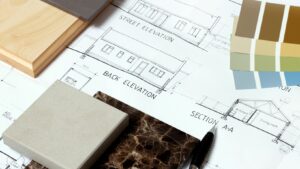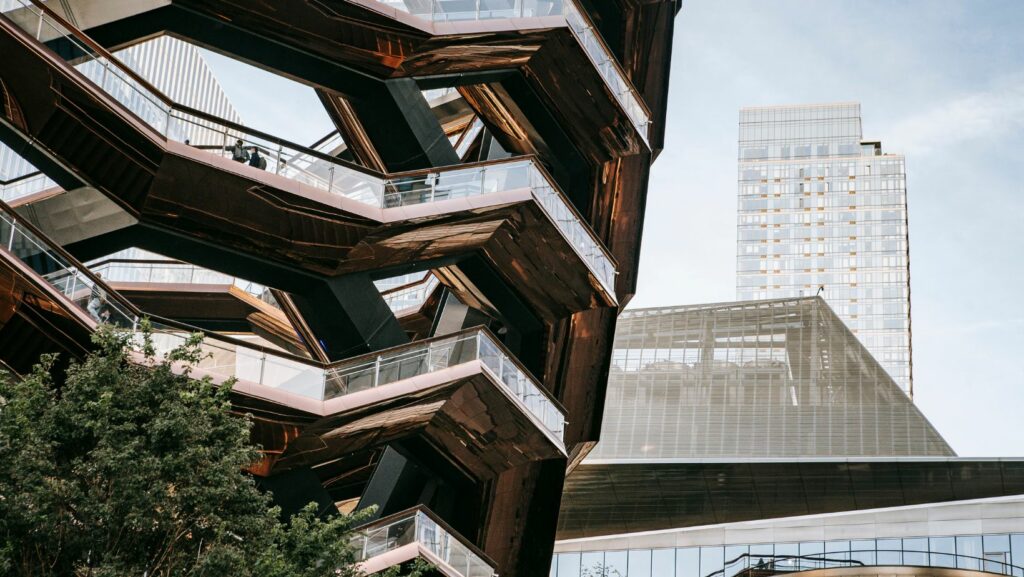Imagine a world without architectural design. It’d be a dull, monotonous landscape of identical structures, lacking the creativity and innovation that make our cities and homes so unique. But what exactly is architectural design?
In the following article, we’ll delve deeper into the definition of architectural design, its importance, and how it shapes the world around us. Stay tuned to explore the fascinating world of architectural design.
Architectural Design Definition

Diving deeper into architectural design, it’s primarily a technical and artistic process. It involves creating concepts that unify functional and aesthetic elements in a structure. Integrating these elements, architects, in essence, translate human needs and aspirations into built environments. With every design, architects seem to tell a story; they infuse spaces with purpose, meaning, and spirit.
Architectural design extends far beyond the specification of the physical structure—it also manages how space is used and experienced. It views the environment not simply as a static object, but as a living, breathing entity that interacts with its surroundings and occupants. The interesting correlation between space and inhabitants underlines the importance of design thinking in architecture.
Moreover, it sheds light on various factors influencing architectural design. These factors range from environmental conditions and local materials available to social context and cultural values. Understanding these dynamics forms a crucial part of the architecture design process. It indeed serves as a visual commentary on the society it’s part of, reinforcing its role as a connector between humans and their lived environment.
Evolution of Architectural Designs

Architectural designs have morphed significantly, shaped by myriad factors ranging from technological advancements to cultural shifts. For instance, Ancient Egyptian architecture showcased a profound respect for the gods and afterlife, evidenced by the grandeur of pyramids. Greek and Roman architecture, on the other hand, reflected an emphasis on functionality, symmetry, and proportionality, exemplified by amphitheatres and aqueducts.
Fast forwarding to the Industrial Revolution, innovations in materials and building techniques promoted the development of renowned architectural styles such as Gothic Revival, Arts and Crafts, and Art Nouveau. Today’s designs lean towards sustainability and integration with the environment, ushering an era of Green Architecture. Thus, architectural design evolution narrates a captivating tale, outlining the complex interplay between humans, their values, and the evolving technological landscape.
Key Components of Effective Architectural Design

Effective architectural design embodies five fundamental components: Functionality, Aesthetics, Structure, Economy, and Sustainability. Functionality refers to the practical usage of the space, a reflection of the architect’s prioritization of human needs. It’s a characteristic honed cultural diversity and evolving lifestyles. Aesthetics, by contrast, deals with the visual appeal of the structure. This aspect often mirrors current artistic trends and personal preferences. Structure relates to the robustness and reliability of a building. A sound structural design considers critical concepts like weight distribution, tensile strength, and materials.
Economy encompasses cost-effectiveness, areal valuation, and resource allocation, all critical to the feasibility of a project. Sustainability, the attribute of increasing importance, focuses on environmental stewardship, energy efficiency, and low carbon footprint. A design that balances all these components reflects the architect’s acknowledgement of societal needs, environmental implications, and evolving design trends.
Architectural Design in the Modern World
Architectural design isn’t just about creating buildings. It’s a delicate balance of technical know-how and artistic flair, a narrative crafted by architects to make spaces that cater to human needs and mirror cultural shifts. From the grandeur of Ancient Egypt to the eco-conscious designs of today, it’s clear that architecture evolves with society.
The five pillars of architectural design—functionality, aesthetics, structure, economy, and sustainability—work together to create a design that’s not only practical and visually pleasing but also robust, cost-effective, and kind to the environment. The Gherkin in London stands as a testament to this holistic approach.
So, when you look at a building, remember it’s more than just bricks and mortar. It’s a story of human values, technological progress, and the timeless art of design.

